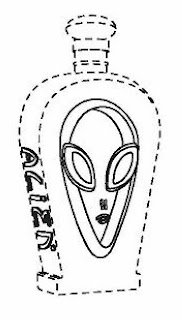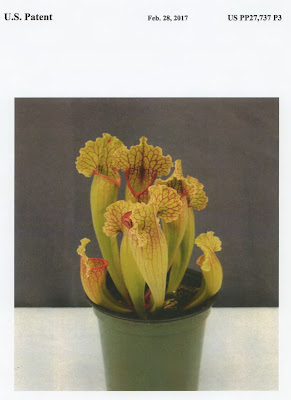The first official intellectual property policy for Rice was instituted in 1990 (mentioned in this blog post), over half a decade after Rice first obtained patents. When it was updated 9 years later, it accompanied the opening of the Office of Technology Transfer (OTT), which was founded to facilitate patenting Rice-developed technologies, and market and manage their licensing (source). In no small part, Dr. Smalley's nanotechnology research and subsequent innovations were the impetus for creating the OTT. It's grown since then, today handling multiple aspects of Rice research and forming an integral part of the university's research strategy.
However, initial investigations into a patent-specific policy accompanied the negotiations and preparations for Drs. Hurley and Wier's inventions' patents being assigned to Rice Institute. Questions about distributing income from any future licenses were included in Frank Hurley's 1943 opening letter [emphasis added]:
Assuming the Board of Trustees to look with favor on this proposal, there would remain the question of reaching a satisfactory agreement between the parties concerned relative to their interests. [...] I am not seeking financial aggrandizement by riding on the coat-tails of The Rice Institute. I sincerely wish the Institute to be the beneficiary of this process, should it prove of value, for, as a native Houstonian and an alumnus, I am most loyal to Rice and hopeful for its future. On the other hand, I should not like to find myself in later life in a position of financial insecurity or want, having made a "bequest" of this sort so early.
 |
Portion of the letter from which above excerpts were taken.
|
So while Dr. Hurley anticipated eventual revenue derived from his invention, he had no practical experience negotiating a contract or agreement to benefit both inventors and Rice Institute. He mentioned University of Wisconsin was the most notable example of a university generating income from patents, and Wesleyan doing the same but in a less positive manner ("I doubt that I would favor the general adoption of the Wesleyan plan by colleges for fear of its possible academic consequences").
One of the initial steps taken by the Board and President was researching Wisconsin and Wesleyan patent policies. Correspondence in September 1943 provided descriptions of how each handled faculty research-based patented inventions to Dr. Wieser, Rice chemistry professor and board consultant. A basic outline was circulated (including facts on the Hurley/Wier inventions):
 |
| Memorandum outlining University of Wisconsin & Wesleyan patent strategies |
|
Basically, both had inventors assign their patents to the universities, but then diverge. Wisconsin's Alumni Research Foundation bore responsibility for all costs of obtaining and administering a patent. Subsequently, 15% of the net royalties earned was given to the inventors, the rest to university. Wesleyan's approach was very different and it's immediately clear why Dr. Hurley was less enthused; the university might shoulder all expenses related to obtaining and administering a patent, but the inventor does not receive any compensation.
 |
Evidently, not everyone at Wesleyan liked their plan, either.
|
In October, Dr. Hurley explained his opinion, stating he believed "that the plan may prove to have a backfire," as the extremely strict attitude may "discourage all work except that of an immediately utilitarian character", causing the university to suffer in the long run "by failing to make important contributions to the advancement of science". He acknowledged his preference may be old-fashioned, especially in the post-war framework that encouraged university research production.
By December, it was decided Rice would take the Wisconsin approach, but uncertainty about details of how to accept ownership remained: via some created business entity, or as the Institute itself. Given the final patents issued years later, Rice chose to give the Institute a corporation.
 |
Excerpt from one of the three patents, showing inventors and ownership by Rice Institute, "a corporation of Texas"
|
Perhaps two of the most baffling aspects surrounding this process were
- the failure to fully implement or codify any policy on intellectual property or pursuit of patents for Rice-supported research, during this interval or immediately after, and
- the abundant research grant letters from the Research Corporation that essentially encouraged recipients to pursue patent ownership.
Indeed, the Research Corporation standard grant awards each stated, in similar verbiage, that the "patent rights which may grow out of research under this grant shall be the responsibility of the grantee institution". The quote is taken from a December 1946 letter, right in the middle of the lengthy Hurley-Wier patent process.
It seems Dr. Houston, who took over from Lovett as President in '46, strongly considered developing some standard or policy in the mid-1950s. Either that, or a representative of the Research Corporation noticed the lack of one, and chose to push the issue with Dr. Houston during a visit. The below letter followed (any inserts or accompanying material has since been lost).
 |
Correspondence indicating some interest in developing a Rice Institute IP policy.
|
Obviously, this was never acted upon; Rice wouldn't have an IP policy until decades later. And it would be nearly 30 years until any patents were assigned to Rice, either.
Interest in patents, entrepreneurship, and research pursuits is at an all-time high, prioritized by the new President Reginald DesRoches and his administration. In this atmosphere, the early dismissive attitude is almost incomprehensible.















